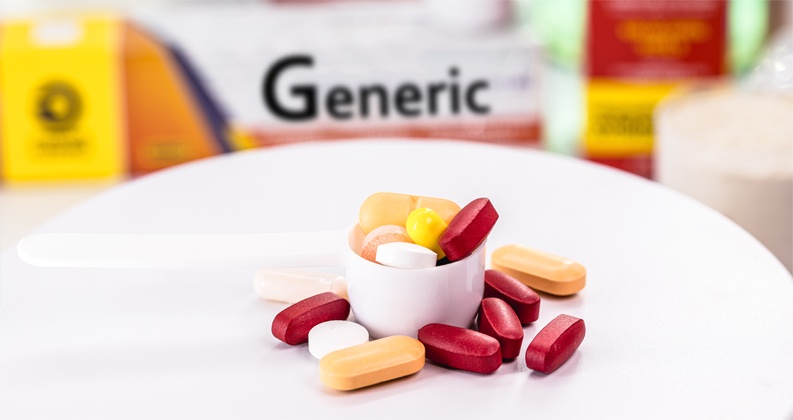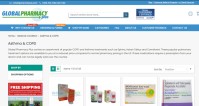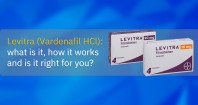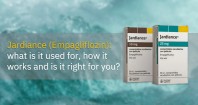
Generic drugs can be real money-savers, which is why so many people choose them over regular brand-name drugs. The best part about generic drugs, besides their much-lower price, is that they are the exact same medication that so many others pay more money for but are much cheaper because they aren’t marketed by a brand-name drug company. If you want to know if the FDA has authorized a certain generic drug that you’ve been prescribed, there are several ways to do this. There is a website you can check and there is also an “orange book” that the FDA puts out that gives you this same information.
What is a Generic Drug?
A generic drug is a drug that is already marketed as a brand-name drug but it has no big brand name attached to it. In every way, authorized generic drugs are the same as brand-name drugs, including in their:
● Safety
● Strength
● Dosage form
● Overall quality
● Route of administration
● Performance characteristics
● Intended use
Indeed, generic drugs provide the exact same clinical benefit and work the exact same way as brand-name drugs, so they are an equal substitute for well-known brand-name drugs. The only difference is that generic drugs will look a little different than their brand-name counterparts, but there is still nothing else different about the medications. They work the same way and provide the same benefits as brand-name medications. The reason they look different is simple: trademark laws in the U.S. prevent the two drugs from looking exactly the same.
Where Can You Find Generic Drugs Authorized by the FDA?
Finding generic drugs authorized by the FDA is easy and can be done one of two ways:
● Use Drugs@FDA. You can select by brand name, and pay special attention to the products listed under “therapeutic equivalents for…” The generic products are indicated with the initials ANDA and a number right next to that. Be aware that the ANDA number is not the same as the NDA number, so make sure it’s the former that you look for.
● Use the FDA’s Orange Book. If you search for the brand name, look for the active ingredient next. Then, search once more using that active ingredient name. If you scroll to the right, you’ll find the dosage form and strength. Scroll right to the TE column. If the number in that column begins with A, that means the FDA has approved generic equivalents. Also, if you find the letter A before the drugs listed in the column “Appl No.,” then that medication is approved by the FDA as a generic medicine.
If you cannot find the generic drug you’re looking for in either of these sources, try going to the First Generic Drug Approvals page and looking it up that way. This is a list of generic drugs that have been approved by the FDA recently, and the medication may very well be on that list. To be sure, the FDA makes it fast and simple to look up the generic drug you’re interested in, so it is very simple to take these medications with confidence after you’ve looked them up online.
The FDA Authorization Process for Generic Drugs
Besides the physical appearance of generic drugs, everything about them is the same as it is with brand-name drugs. In other words, generic drugs work the exact same way as brand-name drugs do. There are a few minor differences, however, besides the look of the drug. First of all, the active ingredients are the exact same for both generic drugs and their brand-name counterparts. The FDA has a Generic Drugs Program that conducts inspections of manufacturing plants and monitors drug safety even after the generic medication is approved and on the market.
That being said, generic drugs can have different inactive ingredients as brand-name drugs, but since the FDA limits how much variability between these two types of drugs is acceptable, these inactive ingredients are guaranteed not to cause any significant variations in the way they work. The two drugs will still work the same but may have minute variations in size, strength, and purity. Again, the variations will be essentially insignificant, especially because the FDA keeps such a close eye on the manufacturing process of both types of drugs.
How Does the Process Work?
In case you’re wondering how the process of getting a generic drug approved works, it’s really not as complicated as you think. First, the company manufacturing the generic drug must submit an abbreviated new drug application (ANDA) to the FDA so that it can be approved. This is necessary to market any drug that is the same as or bioequivalent to a brand-name drug. The FDA will review the application to make sure that the generic medication is an acceptable substitution for the brand-name medicine that it claims to copy.
In order to be approved, the ANDA has to show that the generic drug is the same as the brand-name drug in several ways, including:
● The active ingredient is the exact same as that of the brand-name medication
● The active ingredient has to make the medication pharmaceutically active; i.e., it has to be effective against the condition being treated
● It has to be the same strength as the brand-name medication
● It has to be the same type of product as the brand-name medication (tablet vs. injectable)
● It has to have the same route of administration (oral vs. topical)
● It has to have the same indications
● The inactive ingredients must be acceptable
● Scientific evidence must be proven of the medication’s active ingredient being the same
While some differences are allowed, there are very few acceptable differences, and they must result in the medication working the same as the brand-name medication every time. The FDA reviews all of the evidence to make sure the generic drugs are the same in almost every way as the brand-name drugs they’re copying. But it starts earlier than that when generic drug companies spend months or even years executing stability tests to ensure their products last as long as their brand-name counterparts.
In other words, before the generic drug even gets to the point of being tested by the FDA, the companies producing the drugs do a lot of testing on it to make sure it is as close as possible to the brand-name drug. They even have to explain to the FDA exactly how they plan to market the drug once it’s approved, and inspectors from the FDA go to the manufacturer’s facility to make sure the generic medications are being made accurately. The FDA even has certain requirements regarding the container the medication is in, the labels, and the information included on those labels, to name a few.
Fortunately, this process does not require the manufacturer of the generic drug to repeat clinical (human) and animal studies verifying the results of the drugs. This has already been done by the brand-name company. (Remember, generic drugs are copies of drugs already made by brand-name companies.) This is part of the reason why generic drugs are so much cheaper than brand-name drugs. It is also why generic drugs can usually be accessed by the public much sooner than their brand-name counterparts. Both time and money are saved when making generic medications.
The Many Advantages of Generic Drugs
Most patients approve of generic drugs because they cost so much less than standard medications. In fact, generic medications tend to cost 80-85% less than brand-name medications, and according to the IMS Health Institute, generic drugs saved the U.S. healthcare system roughly $2.2 trillion in the ten-year period between 2009 and 2019. To make it even better, when more than one generic company markets the same generic drug, competition tends to lower the price of these drugs even more, which really benefits the consumers.
In fact, the FDA in 2017 unveiled the Drug Competition Action Plan (DCAP) to encourage more competition to the market so that the costs of generic medications can go down even further. They consider bringing down the costs of these medications to be a top priority, yet they are still sticking to the rigorous testing and monitoring standards they currently have in place. The FDA continuously monitors all approved drug medications, including generic medications, to make sure they are effective, of the highest quality, and most importantly, safe.
Conclusion
It is simple to determine if a generic drug has been approved by the FDA because there are numerous online resources to discover this information. The FDA also has a hard-copy “orange book” if you decide to do this the old-fashioned way. Hopefully, this information has cleared up any concerns you might have had about the efficiency of generic drugs. People buy millions of generic medications each and every year, and it can save them up to 85% on every one of them.
Generic medications are exactly like brand-name medications, with very few minor exceptions, so choosing them over standard medications should never be a concern of yours. And the FDA will always make sure they are just as good as their brand-name counterparts.







